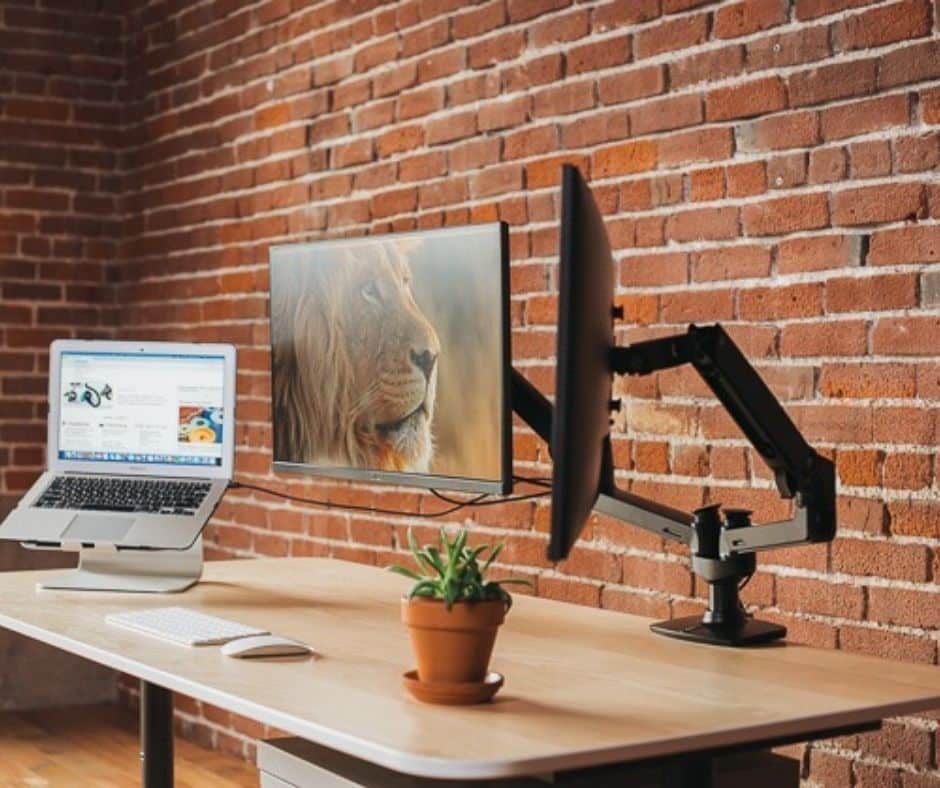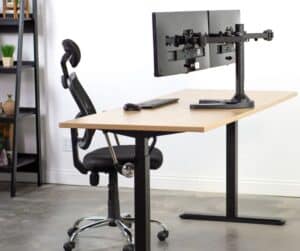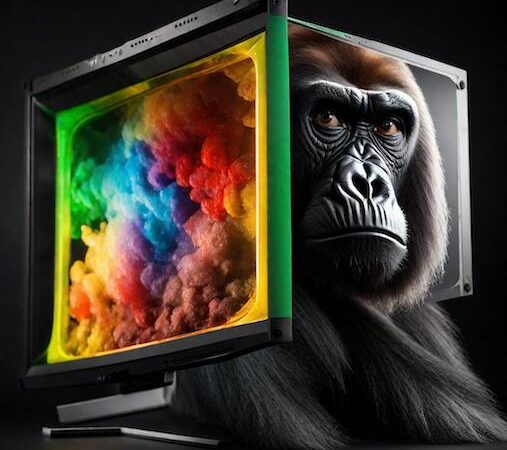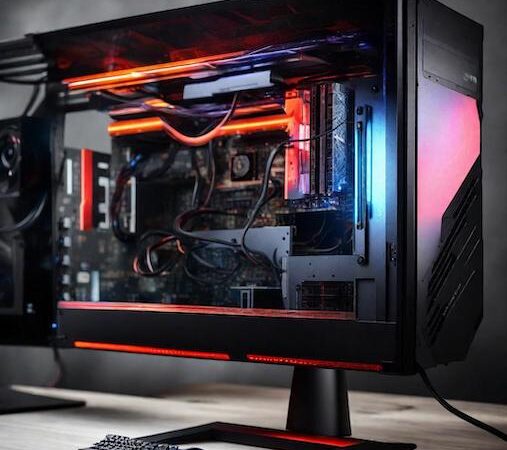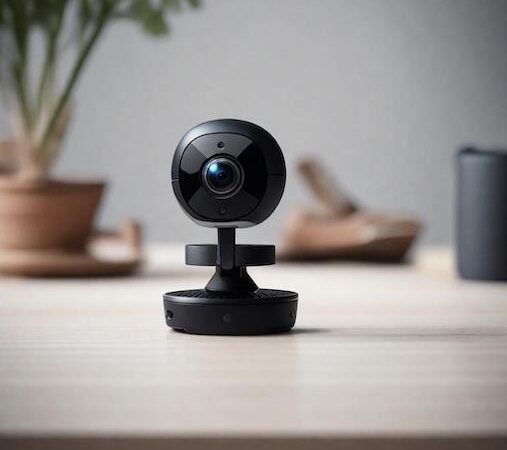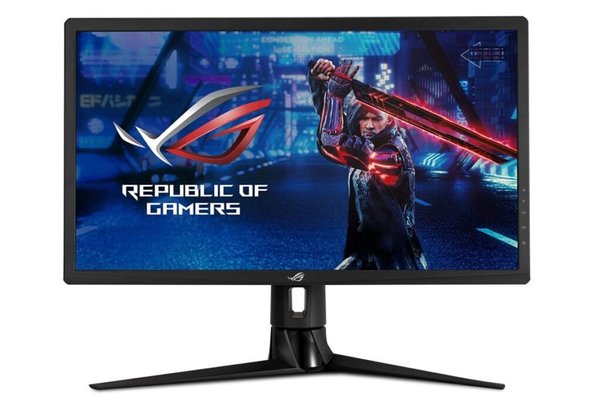The days of placing monitors on the desk using their normal stands are over. And with good reason, since there are several practical benefits in addition to the increased look. This article compares the non-standard desk configuration options of a desk mount monitor and wall mount. Let’s begin our discussion of wall mount vs desk mount monitor.
Wall Mount Vs Desk Mount Monitor
Wall Mount Vs Desk Mount Monitor: Pros of Wall Mounted Monitor
Enhancements to Airflow and Cooling
In wall mount vs desk mount monitor comparison, putting your computer on the wall will dramatically increase its ventilation and cooling capacity.
Since one side will not be forced down, fans of your PC will be able to cool their important parts effectively. As any gamer knows, maintaining a cool monitor is crucial.
It Alleviates Neck and Shoulder Discomfort
Many people set their displays too low, too high, too near, or too far away, which can cause unneeded back, shoulder, and neck strain, as well as eyestrain if your monitor is too close or too distant from your face.
Mounting the monitor on the wall is, therefore, an excellent choice, because when you raise your head to look at the monitor on the wall, your upper and lower cervical vertebrae do not have to rotate as much, and the weight of your head is distributed more evenly among your front and back neck extensor muscles.
It Saves Room
Utilizing a wall mount monitor is not only effective but also saves a tremendous amount of room. If you have a desk with a portable computer, mounting a display on the wall will save a large room.
Wall Mount Vs Desk Mount Monitor: Cons of Wall Mounted Monitor
There are several advantages to putting your computer on the wall, but there are also some disadvantages to consider.
Extra Time is Required for Setup
It is time-consuming to properly and securely install a wall-mounted setup. Even if you choose a PC case that is mounted on the wall, you will need to find the right drilling sites on your wall and have some knowledge of electrical piercing to install the case successfully.
Increasing Requirements
Wall mounts have the most stringent requirements since they must be attached to studs within the wall or to drywall using specific screws. If you want to guarantee that your monitors are securely secured, you must attach the wall mount to a stud instead of the drywall alone.
More challenging to Alter or Replace Components
If you wall-mount your PC, you will have a more difficult time upgrading or replacing the components if your present parts fail or if you decide to replace them.
You must take the complete tower from the wall, replace the components, and then reconnect the computer to the wall.
Wall Mount Vs Desk Mount Monitor: Pros of Desk Mount Monitor
Work Productivity
If you’re still doing all of your jobs on a laptop, you’re probably squandering hours every day. Switching back and forth between multiple windows while trying to complete a basic task can be stressful.
With a desk mount monitor, windows may be distributed across two displays. Having two-guard nodes is even better; with three displays, you can organize your windows and files in a way that makes them easy to find, view, and edit.
Decreased Neck Pain
We’ve all spent many hours engrossed in a project at our desk, only to get a terrible crick in the neck. A monitor mount will alleviate this annoyance. With a normal, immovable monitor stand, your monitor is fixed in a particular position, which is often inappropriate for you.
Sit-Stand Versatility
If you have a sitting desk that is adjustable for height, it is even more important to use a lift. The ideal ergonomic position of your monitor varies depending on whether you are sitting or standing, so if your monitoring stand is in the wrong place at least 50 per cent of the time.
With a monitor mount, you can always put your display in the most comfortable position, regardless of how high or low you elevate or lower your desk.
Wall Mount Vs Desk Mount Monitor: Cons of Desk Mount Monitor
Instability Problems
There is a strong possibility you have read about my fixation with stability if you have been searching for a standing desk. A wobbly standing desk can be a significant source of distraction.
Examining the architecture of a monitor arm reveals that it rises from a post or gas arm system. The further monitors are from their mounting points, the more they will jiggle and wobble. If you go for a cheap, fragile monitor arm, this issue will be more noticeable than with a high-quality device.
Monitor Width Constraints
If you are employing monitors with a screen size of 24″ or more, you will certainly need to consider the size limitations of your monitor arm. Because the majority of computer monitor arms feature complete tilt and pan capabilities, problems might arise when the width of the display increases.
Most desk mount monitors will utilize a ball joint for tilt/pan functionality. Once a monitor gets excessively broad, the leverage exerted by the weight beyond this connecting point causes complications.
Can Be Complicated to Adapt
The adjustability of a desk mount monitor might be an issue for some users. There are five fundamental adjustments available with a monitor arm. These are the height, depth, lateral, pan, and tilt settings.
Some monitor arms need the freeing of collars or bolts to make adjustments, whilst others do not. These modifications may involve height, pan, and tilt. According to the wall mount vs desk mount monitor comparison, this might be problematic if you want to make frequent modifications or have numerous users at the same workstation.
Wall Mount Vs Desk Mount Monitor: Conclusion
Mounting a monitor might be a smart option if you’re prepared to take the time to attach your monitor case to the wall firmly and have a nice location in mind.
After going through this article on monitor wall mount vs desk mount, i hope you understood what will suit your needs. For best results, you should mount your monitor so that it is not too high from the ground and in an area that makes mounting easier from time to time.
Wall Mounting Gaming Monitor Models
Wall-mounted gaming monitors are a great way to save space and create a more immersive gaming experience. Some popular models with wall-mounting capabilities include:
- ASUS ROG Swift PG279QZ: This 27-inch gaming monitor has a 1440p resolution and a fast 165Hz refresh rate, making it ideal for fast-paced games. It also has G-Sync technology, which synchronizes the monitor’s refresh rate with your GPU, reducing screen tearing and stuttering.
- Acer Predator X27: This 27-inch gaming monitor has a 4K resolution and a fast 144Hz refresh rate. It also has G-Sync technology and HDR for an immersive gaming experience.
- Samsung CHG90: This massive 49-inch gaming monitor has a 1080p resolution and a fast 144Hz refresh rate. It also has a unique ultrawide aspect ratio, which provides an immersive gaming experience with a wider field of view.
- LG 34UM68-P: This 34-inch ultrawide gaming monitor has a 1080p resolution and a fast 75Hz refresh rate.
- AOC Agon AG352UCG6: This 35-inch ultrawide gaming monitor has a 1440p resolution and a fast 120Hz refresh rate, making it ideal for fast-paced games. It also has G-Sync technology, which reduces screen tearing and stuttering.
All of these monitors have VESA mount compatibility, which means they have a standard pattern of mounting holes on the back of the monitor that can be used to attach a VESA mount. These mounts can be used to securely attach the monitor to a wall, a monitor arm or a stand. Additionally, many of these monitors have features such as G-Sync, high refresh rates and ultrawide aspect ratio which provide an immersive gaming experience.
Desk Mounting Gaming Monitor Models
Desk-mounted gaming monitors are a great way to save space on your desk and create a more immersive gaming experience. Some popular models with desk-mounting capabilities include:
- ASUS ROG Swift PG279QZ: This 27-inch gaming monitor has a 1440p resolution and a fast 165Hz refresh rate, making it ideal for fast-paced games. It also has G-Sync technology, which synchronizes the monitor’s refresh rate with your GPU, reducing screen tearing and stuttering.
- Acer Predator X27: This 27-inch gaming monitor has a 4K resolution and a fast 144Hz refresh rate. It also has G-Sync technology and HDR for an immersive gaming experience.
- Samsung CHG90: This massive 49-inch gaming monitor has a 1080p resolution and a fast 144Hz refresh rate. It also has a unique ultrawide aspect ratio, which provides an immersive gaming experience with a wider field of view.
- LG 34UM68-P: This 34-inch ultrawide gaming monitor has a 1080p resolution and a fast 75Hz refresh rate.
- AOC Agon AG352UCG6: This 35-inch ultrawide gaming monitor has a 1440p resolution and a fast 120Hz refresh rate, making it ideal for fast-paced games. It also has G-Sync technology, which reduces screen tearing and stuttering.
It is worth noting that not all the monitors may come with a desk mount with the package, so it is always good to check before buying if the package includes a desk mount or not. If it doesn’t, they can be easily purchased separately.

